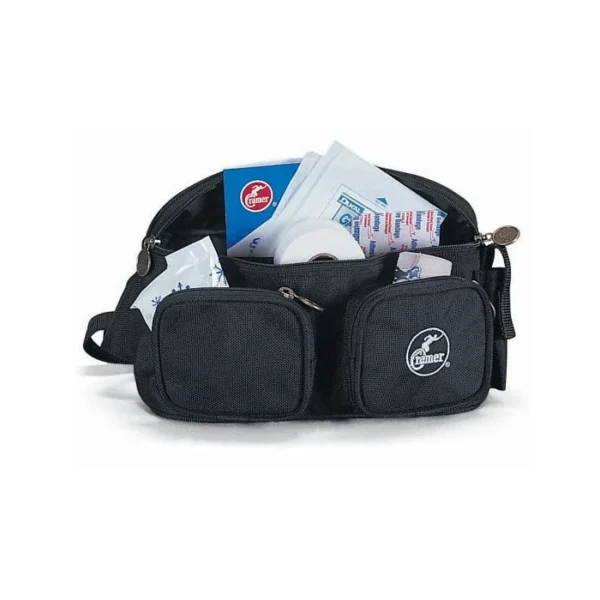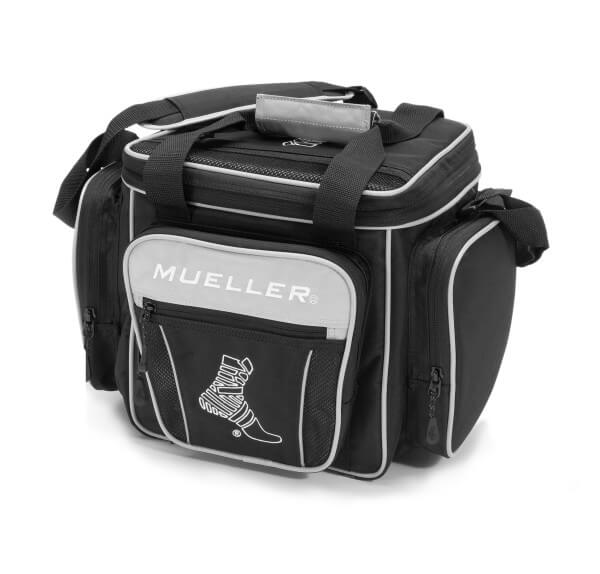5 Surprising Ways Your Choice of Athletic Trainer Kit Bag Makes A Difference
An athletic trainer kit bag is a specialized bag or backpack that contains various supplies and equipment specifically designed for athletic trainers to provide immediate care and support to athletes. These bags are essential tools for athletic trainers, allowing them to carry and organize their equipment conveniently, ensuring they have everything they need to deliver prompt and effective care on the field or court.
In this post, we will first explain 5 surprising ways your choice of athletic trainer kit bag is an important one. We will then go on to suggest some of the criteria that should go into your choice of bag in order to make the decision an optimal one.
Why Is Your Choice of Athletic Trainer Kit Bag An Important One?
The athletic trainer kit bag plays a crucial role in enhancing the standard of care in several ways:
- Organization and Accessibility: Athletic trainer kit bags are designed with multiple compartments and pockets, allowing for systematic organization of supplies. This ensures easy access to equipment and eliminates the need for searching or rummaging through a disorganized bag in critical situations. Quick and convenient access to necessary supplies enables athletic trainers to provide immediate care without delay, which can be crucial in emergency situations.
- Portability and Mobility: Athletic trainers are often required to move quickly and cover a large area during practices, games, or events. Kit bags are designed to be lightweight, durable, and easy to carry, enabling athletic trainers to move efficiently without being encumbered by heavy or cumbersome equipment. The portability and mobility of the bag allow athletic trainers to be agile and responsive, providing care wherever it is needed on the field or in the training facility.
- Comprehensive Equipment Selection: Athletic trainer kit bags are designed to accommodate a wide range of essential supplies and equipment specific to sports medicine. These may include items such as tape, bandages, splints, wound care supplies, ice packs, first aid materials, and emergency response equipment. Having a comprehensive selection of equipment readily available in the kit bag ensures that athletic trainers are well-prepared to handle various injuries, emergencies, and medical conditions that may occur during athletic activities.
- Emergency Preparedness: In the event of a serious injury or medical emergency, quick and efficient access to necessary equipment and supplies can significantly impact the outcome. Athletic trainer kit bags are typically equipped with emergency response items like AEDs (automated external defibrillators), CPR masks, and emergency action plans. These tools allow athletic trainers to provide immediate, life-saving care in critical situations, potentially making a significant difference in the outcome of an emergency.
- Professionalism and Preparedness: Carrying a well-stocked and organized athletic trainer kit bag conveys professionalism and preparedness. It demonstrates that the athletic trainer is equipped with the necessary tools to provide quality care and instills confidence in athletes, coaches, and other members of the sports team. The presence of an athletic trainer kit bag signals the commitment to athlete safety and welfare, enhancing the standard of care within the sports setting.
In summary, an athletic trainer kit bag is a vital tool for athletic trainers, providing organization, portability, and comprehensive equipment selection. By facilitating quick access to supplies and emergency response equipment, the kit bag enhances the standard of care, allowing athletic trainers to provide efficient and effective medical support to athletes in various sports and athletic events.
Which Are The Most Important Criteria For Choosing An Athletic Trainer Kit Bag?
When choosing an athletic trainer kit bag, there are several important criteria that athletic therapists should consider to ensure they have a bag that meets their specific needs and facilitates their work effectively. Here are some key criteria to keep in mind:
Size and Capacity
The size and capacity of the kit bag should be appropriate for the athletic therapist’s specific requirements. Consider the amount and type of equipment and supplies typically carried during practices, games, or events. The bag should be spacious enough to accommodate all essential items without being excessively bulky or heavy.
Organization and Compartments
Look for a bag that offers multiple compartments, pockets, and dividers. This allows for efficient organization of supplies, ensuring easy access to specific items when needed. Separate compartments for different categories of equipment, such as first aid supplies, taping supplies, or emergency response items, can help keep everything organized and readily accessible.
Durability and Quality
The bag should be made from durable materials that can withstand the demands of regular use and various environmental conditions. Strong zippers, reinforced stitching, and sturdy handles or straps are important features to consider. A well-constructed bag will have a longer lifespan and can handle the rigors of athletic training settings.
Portability and Comfort

Consider the bag’s portability and how it can be carried comfortably. Look for adjustable and padded shoulder straps or handles that distribute weight evenly and provide comfort during transportation. It is important to have a bag that allows for easy mobility and does not cause unnecessary strain or discomfort when carried for extended periods. In certain situations, a fanny pack may provide optimal portability, albeit at the expense of offering fewer compartments and storage.
Easy Maintenance
Athletic therapy settings can involve exposure to dirt, moisture, and potentially biohazardous materials. Choose a bag that is easy to clean and maintain, as hygiene is crucial in sports medicine. Bags made from water-resistant or washable materials can help prevent the buildup of odors, bacteria, and contamination.
Visibility and Identification
Opt for a bag that has reflective elements or bright colors to enhance visibility, especially in low-light conditions. This is important for safety purposes during outdoor activities or in dimly lit environments. Additionally, having a bag with clear identification tags or a designated space for personal identification can help distinguish it as the athletic therapist’s bag and prevent mix-ups.
Customizability and Flexibility
Consider whether the bag allows for customization or personalization to meet individual preferences and specific needs. Some bags offer modular compartments or removable dividers that can be adjusted to accommodate different equipment configurations. This flexibility allows for tailoring the bag to suit the unique requirements of the athletic therapist.
Summary & Conclusion
By considering these criteria, athletic therapists can choose a kit bag that meets their practical needs, enhances organization and efficiency, and supports their role in providing optimal care to athletes. It is important to assess individual requirements and preferences, as well as consult with colleagues or experienced athletic trainers to gather recommendations and insights.







